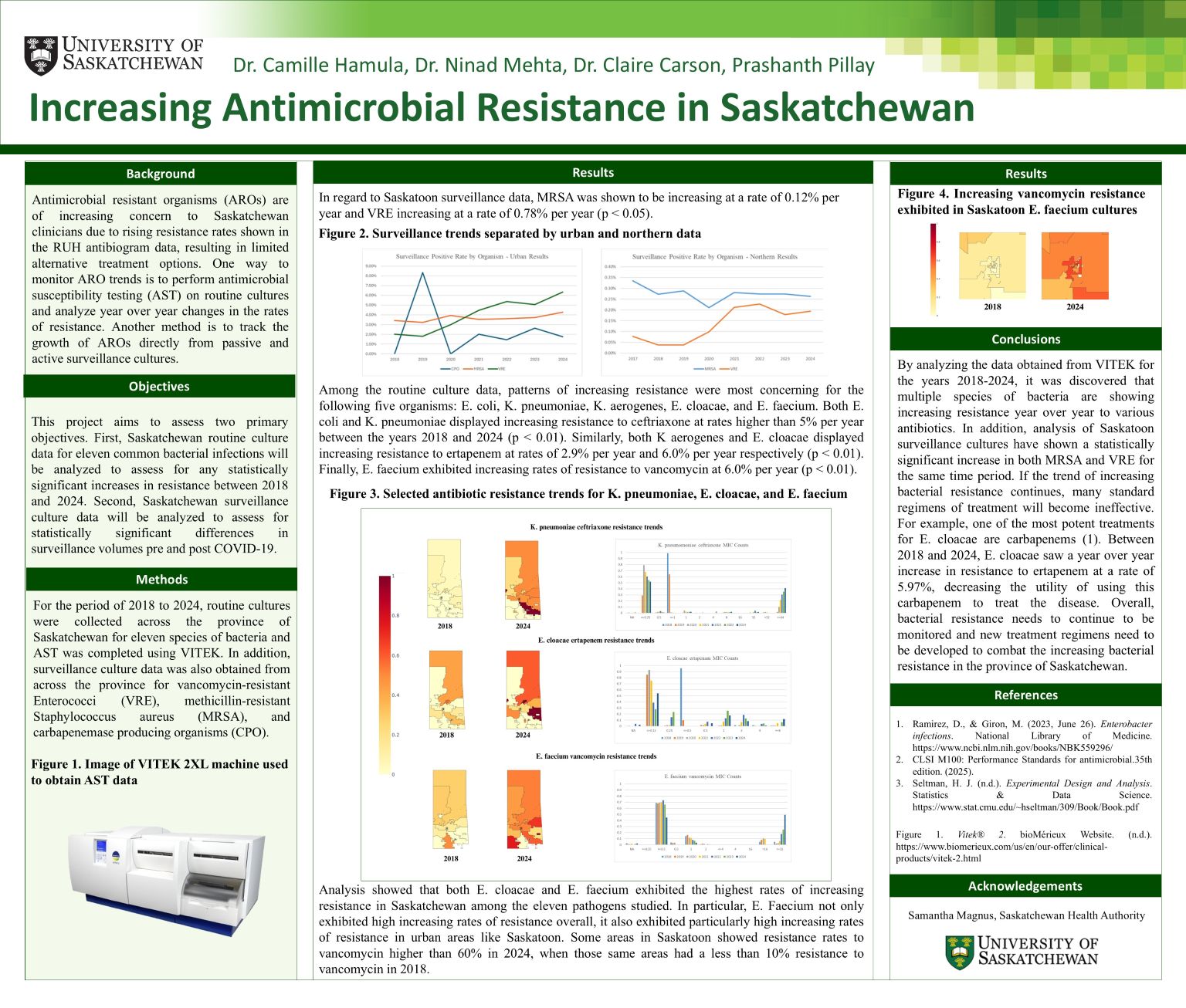
Increasing Antimicrobial Resistance in Saskatchewan
Prashanth Pillay
Background: Antimicrobial resistant organisms (AROs) are of increasing concern to Saskatchewan clinicians with rising resistance rates shown in the RUH antibiogram data resulting in limited alternative treatment options.
Methods: From 2018 to 2024, routine cultures were collected across Saskatchewan and antimicrobial susceptibility testing was completed using VITEK. Surveillance culture data was obtained for vancomycin-resistant Enterococci (VRE), methicillin-resistant Staphylococcus aureus (MRSA), and carbapenemase producing organisms (CPO).
Results: Among routine culture data, increasing resistance patterns were most concerning for E. coli, K. pneumoniae, K. aerogenes, E. cloacae, and E. faecium. Both E. coli and K. pneumoniae displayed yearly increasing resistance to ceftriaxone at rates higher than 5% (p < 0.01). Similarly, K aerogenes and E. cloacae displayed increasing resistance to ertapenem at yearly rates of 2.9% and 6.0% respectively (p < 0.01). E. faecium exhibited increasing rates of resistance to vancomycin at 6.0% yearly (p < 0.01). Regarding surveillance data, MRSA was shown to be increasing at a yearly rate of 0.12% and VRE at a rate of 0.78% (p < 0.05).
Conclusion: Both routine and surveillance culture data analysis revealed multiple species of bacteria are showing increasing resistance year over year to various antibiotics in Saskatchewan.
